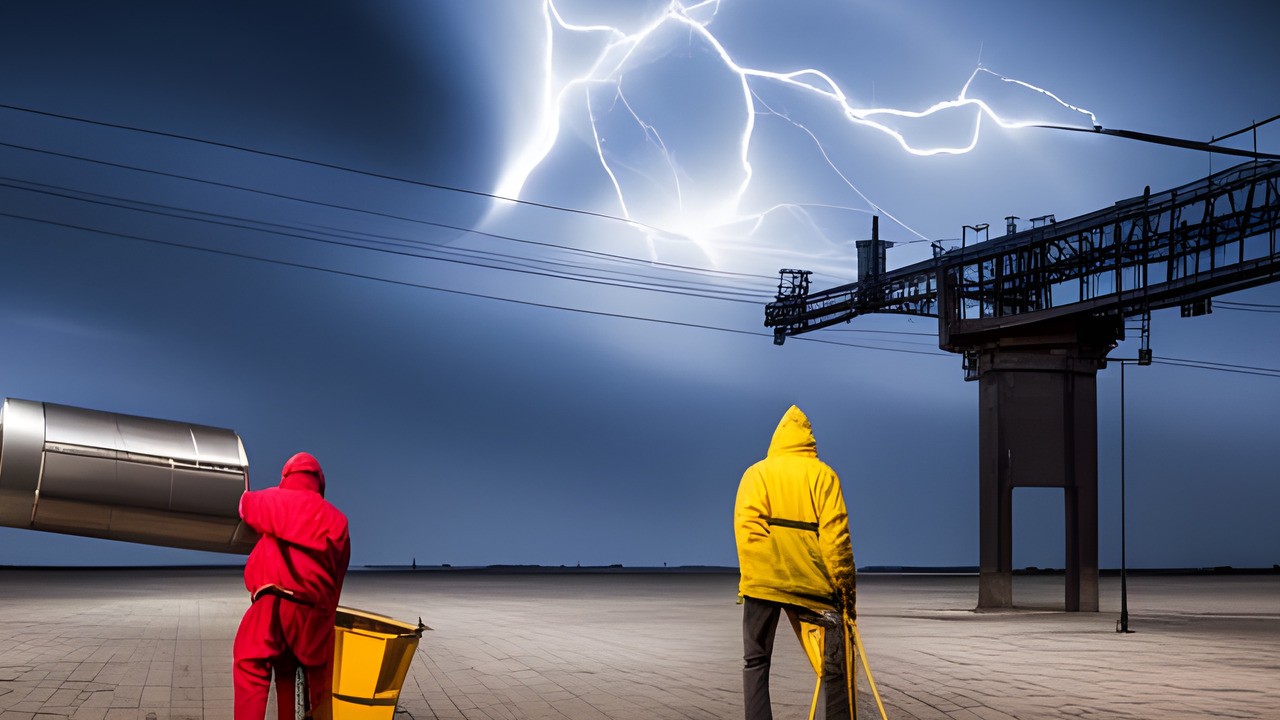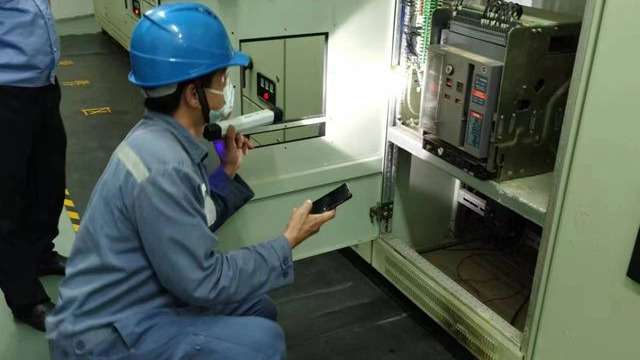The issue of cable theft continues to plague utilities, telecommunication- and transportation industry, with the German railway system being the latest victim. At the Enlit Conference in South Africa 2023, I seized the opportunity to engage with industry leaders and discuss strategies for preventing cable theft. The exchange of ideas and collaboration among attendees at the conference served as a valuable platform for progress in combatting cable theft and protecting critical infrastructure.
Copper is a valuable metal that is widely used in various industries due to its unique properties, including high electrical conductivity and corrosion resistance. As the demand for copper increases globally, the incidence of cable theft has also risen, resulting in significant economic losses and disruptions to critical infrastructure in various countries worldwide.

Global Overview of Cable Theft
Cable theft refers to the act of stealing copper- or aluminium cables or wires from various locations, including construction sites, railway tracks, telecommunications networks, and power grids. This form of theft has become a global problem due to the increasing demand for copper and other metals, which has led to rising prices and the temptation for thieves to steal cables for resale.
The types of cables targeted by thieves include power cables, telecommunication cables, railway signalling cables, and other cables that contain copper or other valuable metals. The cables are typically stripped of their insulation and then sold to scrap dealers, who will then sell the copper to smelters or exporters.
The global trends in cable theft indicate that this problem is on the rise, particularly in developing countries where security measures are less effective. In some countries, cable theft has become a serious threat to public safety and national security, as it can disrupt critical infrastructure. These disruptions can cause significant economic losses for businesses and governments, and may also threaten public safety.
South Africa is considered one of the hardest-hit countries concerning cable theft. The widespread nature of the problem has had an enormous impact on the country's infrastructure. With the simultaneous increase in electricity prices, businesses and consumers have had to pay more for their power, further exacerbating the problem. The South African government has implemented stringent measures to combat cable theft, including the establishment of a committee to reduce copper theft.
The estimated loss due to cable theft in South Africa is between $280 million and $370 million per year.
In India, cable theft has become a significant concern in recent years. The country's rail authorities have been reporting a rise in cable theft incidents, resulting in significant economic losses. In 2018 alone, Indian Railways lost almost $33 million due to cable theft. The problem is particularly prevalent in urban areas, where thieves target overhead power lines and transformer stations. The Indian government has placed increased security measures and monitoring systems throughout the country to improve oversight and reduce theft rates.
The estimated loss due to cable theft in India is between $1.3 billion and $1.9 billion per year.
In the United Kingdom, cable theft is also a persistent challenge. The London Underground has been particularly affected, with thieves targeting transport infrastructure. In 2011, the UK government passed laws to deter cable theft, including making cash payments for scrap metal illegal, and granting increased powers to the police to investigate theft incidents. Despite such measures, cable theft incidents still occur regularly and continue to impact the country's energy infrastructure.
The estimated loss due to cable theft in the United Kingdom is between $620 million and $840 million per year.
In Australia, the National Copper Theft Taskforce was established in 2012 to coordinate with various organizations to reduce the incidence of cable theft in the country's electrical and telecommunication networks. The task force has reportedly contributed to reductions in copper theft levels, although challenges remain in remote areas where theft cases continue to occur frequently.
There is no official estimate of the loss due to cable theft in Australia. However, a 2019 report by the Australian Communications and Media Authority (ACMA) estimated that the cost of replacing stolen telecommunications cables was $10 million per year. This does not include the cost of lost productivity, damage to property, or other indirect costs.
Cable theft is also a problem in the United States, with the theft of copper cables resulting in significant economic losses and disruptions to essential services such as electricity and telecommunications. The problem is particularly prevalent in urban areas, where thieves target underground cables and transformer stations. The causes of cable theft in the US are similar to those in other countries, with the high demand for copper and the high prices offered by scrap dealers driving the theft of cables. In addition, the US has also experienced an increase in the theft of catalytic converters, which contain valuable metals including platinum and palladium.
The estimated loss due to cable theft in the United States is between $1.5 billion and $2 billion per year. This includes the cost of replacing stolen cables, the cost of lost productivity, and the cost of damage to property.
The causes of cable theft in Brazil are similar to those in other countries. In addition, the country's rapidly growing economy has led to an increase in the demand for electricity and telecommunications services, creating additional opportunities for cable thieves. The impacts of cable theft in Brazil are significant, with the country experiencing frequent power outages and disruptions to telecommunications services. In addition to the economic losses caused by these disruptions, cable theft has also resulted in increased crime rates, as criminals take advantage of the power outages to commit crimes.
In 2021, there were over 100,000 incidents of cable theft reported to the ABRATEL (Brazilian Association of Telecommunications Companies). This is a huge increase from the 50,000 incidents reported in 2015. The estimated loss due to cable theft in Brazil in US$ is between $120 million and $240 million per year.
Takeaway
Cable theft is a big problem that affects many communities worldwide. Criminals often target cables carrying electricity, telecommunications, and transportation signals to make quick profits by selling them for scrap metal. These thefts can result in severe consequences, including power outages, communication disruptions, and transportation delays. In some cases, cable theft has led to injury or death due to the interruption of critical services.
Governments and companies continue to implement measures to combat this issue, such as surveillance cameras, increased security, and improved cable designs. However, cable theft remains a persistent problem that requires ongoing attention and action.
CLOU Smart distribution software Enhancing Efficiency with Smart Distribution Management Software (DMS) is a powerful tool that can help utilities to optimize their networks and identify areas that are more prone to theft. This information can be used to deploy security measures, such as increased patrols or security cameras, in areas that are at higher risk. If you are looking for a way to improve the security, efficiency, and customer satisfaction of your energy grid, then CLOU Smart distribution management is the solution for you. Contact us
Enhancing Efficiency with Smart Distribution Management Software (DMS) is a powerful tool that can help utilities to optimize their networks and identify areas that are more prone to theft. This information can be used to deploy security measures, such as increased patrols or security cameras, in areas that are at higher risk. If you are looking for a way to improve the security, efficiency, and customer satisfaction of your energy grid, then CLOU Smart distribution management is the solution for you. Contact us Contact Us today to learn more about how we can help you.
Contact Us today to learn more about how we can help you.
Editor's note: This article was originally published in May 2023 and has been updated for comprehensiveness.







please let me informed Whit this important issue
Thank you for your interest. I suggest, you subscribe to our newsletter or visit our website regular for updates.
We are interested in cable theft solution.
Do you have any instrument to detect this…we used to work with fiber, where we can detect a broken cable and their location…but fiber is requested..
Regards
Ivan
Thank you for your comment, Ivan. We don't have an instrument for exactly this purpose, because detection of cable theft is complex. From our side, we could contribute with fault find locators and monitoring solutions like AMI or distribution software. This is only for power lines, but cable theft is also very popular in the telecommunication segment. Only in combination with physical security measures like installing fences, gates, and security cameras around cable areas a better protection can be given. Other discussed ideas at the conference have been tracking devices or invisible cable markings that can be detected by law enforcement.
Congratulations for so good article of copper cables theft. Please send your devices and quote to start studying to offer principal Utilities of rural area.
Thank you, Mariano. Please see my reply to Ivan, he was asking a similar question.